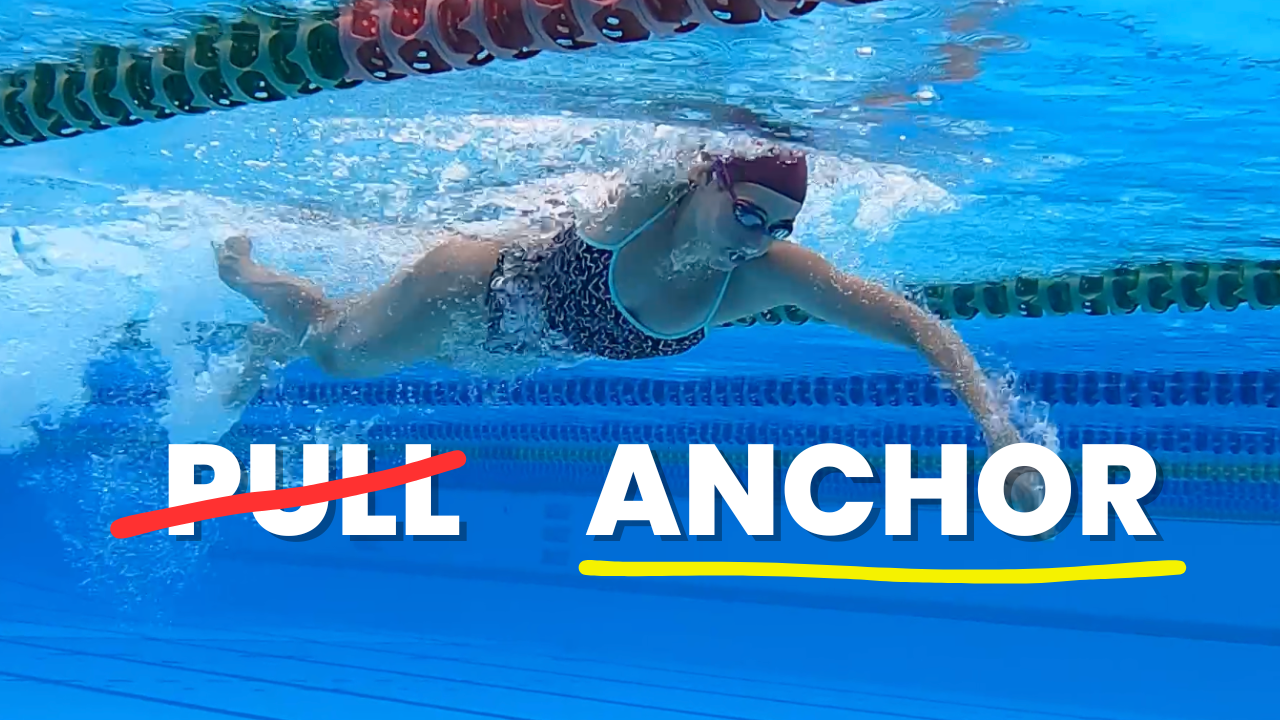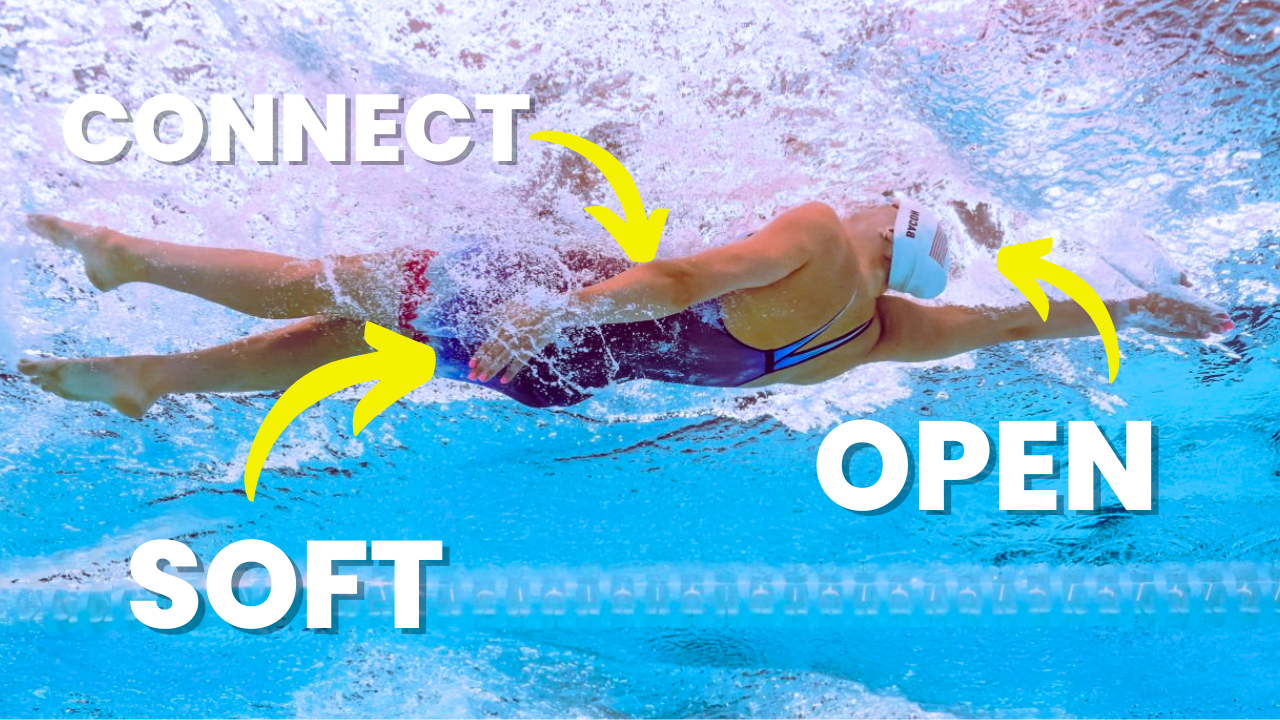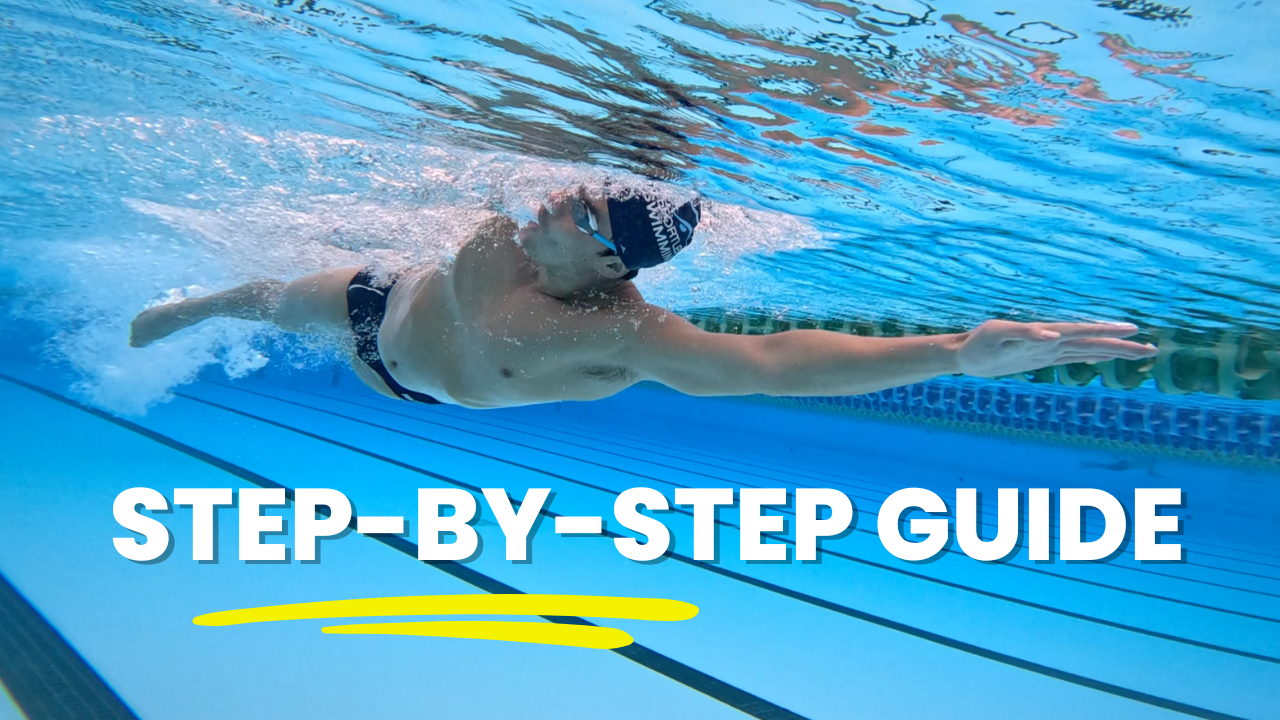In today’s video, we’re looking at an athlete who’s got too much of a pause in his stroke where he loses momentum. We look at how he exits properly and keep his momentum. We also cover how he can improve his catch for more propulsion.
Transcription:
That you want to be able to be relaxed enough and have the timing to reposition your forearm. Pull down with the fingertips and let that forearm come with you and then understand that it’s from that position you really want to try and get yourself going forwards. Okay, so never try and propel yourself from a flat arm position. You’ll just end up bending your elbows first and slipping through the water.
Hi, Brenton here. Welcome back to feedback Friday. Today’s episode is done by our coach Mitch Patterson. He did the episode two weeks ago so you can go ahead and check that out. Mitch has worked with us for the last couple of years and has competed at a national level. So Mitch will do today’s Feedback Friday. And one thing I put out last week on YouTube was do you want to see butterfly, backstroke, and breaststroke analysis videos? And the overwhelming response was yes you want to say how to analyze those strokes, the things we typically want to try and achieve there, and how we’d go about making those changes.
So, what I’m asking you is if you have a good quality fly, back, or breaststroke footage sends it to us and we’ll choose one every single week to do as part of our feedback Friday. It’s not going to replace our freestyle ones, it’s going to be in addition to. So, if you have underwater footage from the side, from the front, and some above water footage that’s in good quality send us those links. Now, most people tend to upload it to YouTube, mark it as unlisted, and send us those links. And that’s the way that we can download those videos and analyze them. So, I’m going to put a link below that will go to our contact form and I want you to send us those links, give us a bit of background on your swimming, and maybe some times, maybe some things that you’re training for, give us some context to work with, and we’ll choose one every single week.
Now we do this, well I do this on a regular basis inside our video membership with stroke analysis. So if you want to skip the queue and you want to work with me on an ongoing basis to improve your technique, swim faster, and make it much more efficient then check out our video membership with stroke analysis. And that’s where I work daily with a bunch of athletes and help them improve their swimming and bring their paces down. Let’s get into today’s episode of feedback Friday and this is Mitch analyzing someone’s stroke. Hope you enjoy it.
In this video, we’re going to look at how we can steer ourselves away from any stop-start nature in the stroke either at the back, or at the front, or both, and guide ourselves towards a smoother and flowing stroke. We’ll also touch on over rotation and overreaching as well as high elbow recovery and we’ll also look at alignment. Okay. I’m going to play this video in the standard motion so you can see. So, we can notice here that there’s a very stop start motion at the back of the stroke with the left arm and you’ll also notice that there’s quite a lot of overreaching and over rotation on the right side at the same time.
So, if we come back and have a look at what we want to be aiming for is a smooth pull through into the recovery and back out into the entry. So, if you imagine this pulling through nice and smooth, exiting the water in a smooth movement, and then coming back and entering out in front. The only time that there’ll be any sort of smooth pausing or gliding is out the front. The rest of the stroke is a smooth movement which doesn’t stop. So if you find yourself pausing at the back and holding on what you can do is this, have the idea that as you’re pushing out the back with your stroke, as you’re pushing out the back, consider lifting your upper arm and your elbow continuously as you continue pushing out the back. So, you want to be pressing out the back past the hip and lifting your arm into the air at the same time. And as you finish your push at the back you’ll be lifting your elbow over the water and bringing it into your recovery and into your entry.
So, we can see here that the arm is quite straight out the back there and pausing in that position creates quite a big lul in the proportion of your stroke and also throws your timing out of whack. So, if you could imagine pushing out the back here and you can see that there is still a little bit of a bend in the elbow there. Most people have this. So, all that needs to happen is as that push is continuing there the elbow will get lifted and brought forward, up and brought forward.
So, I’d recommend practicing this idea in single arm freestyle with an arm out in front and you’ll just do one arm at a time, do it slow and smooth if this idea of seems a little bit left field. But practice pushing out the back and lifting your elbow up and out and carrying your arms smoothly over the recovery and into the water out in front. This will also help with the arm entry going in, having that elbow higher than the forearm coming into the water with that little triangle there. It makes it much easier to control where you put your arms into the water.
So, also we’ll have a look at overreaching and over-rotation. So, you don’t want to go more than 45 degrees or so with your body and when it comes to reaching out in front your shoulder doesn’t have to push that much forwards to get a really good reach. So, just because you’re straightening your arm doesn’t mean that you have to continue pushing it forward. Once your elbow is straightened out in front just a bit more from the shoulder is enough to get a really good extension. Anything too much it causes twisting through the body and that can cause a S like swim shape as you move forward or it can put you into an unstable position on your side too much.
So, for someone like this who does overreach and over-rotate, changing from an over rotating position to a little bit, into a better vicinity, the shoulder rotation to that person will feel a little bit flatter compared to what they’re doing and also they’re reaching that will feel a little bit shorter. So, the last couple of things here, just having a look at the alignment. You can see because the elbow has dropped into the recovery that the arm swings across the midline and then enters, the forward hand enters flat into the water. Keeping that elbow and upper arm high as the arm comes around gives you a greater sense of control as to where you put your hands into the water. So, high elbow recovery can really help put yourself onto train tracks and work on that alignment. So, here swinging across the midline a little bit too much so there needs to be a slightly wider entry with high elbows to give more control and that will also help fingertips first going into the entry and the arm extension.
I want to highlight the high elbow catch in this because it’s very important. You can observe here that this swimmer is actually pulling before he’s in an effective catch position meaning that his elbow has dropped under the water and he isn’t actually getting much hold or propulsion, isn’t getting much catch and propulsion from his pull through. It pays to take time out in front to reposition your forearm. It doesn’t have to be a lot, just has to be some. A little bit of downward movement with the hand and forearm bending at the elbow will give you a greater surface area of propulsion pulling through and you’re going to get much more speed and efficiency through it. Okay.
So, just because you feel the water around your arm out in front here doesn’t mean that it’s time to pull. So it’s very important that you, just because you feel water engulfed around your arm you understand that you’re going to have patience enough to reposition your forearm before you feel like going somewhere. So, the better you get at this you’ll be able to blend that movement a lot better so you’ll be able to get into that catch and go straight into the power phase. But you want to be able to be relaxed enough and have the timing to reposition your forearm, pull down with the fingertips, and let that forearm come with you, and then understand that it’s from that position you really want to try and get yourself going forwards. S, never try and propel yourself from a flat arm position, you’ll just end up bending your elbows first and slipping through the water.
Really good drills to practice this is a doggy scoop, sculling, and especially the YMC drills just to practice that coordination and to teach you that these movements don’t require a lot of force. The more tension you apply at the front of your arm stroke here the harder it is going to be to bend your elbow. So, it pays to be a little bit more relaxed in your arm extension out in front so that you can bend your elbow and get a high elbow catch position. All right. So, tell us what you think about the video and hit the like button. See you guys next time.









